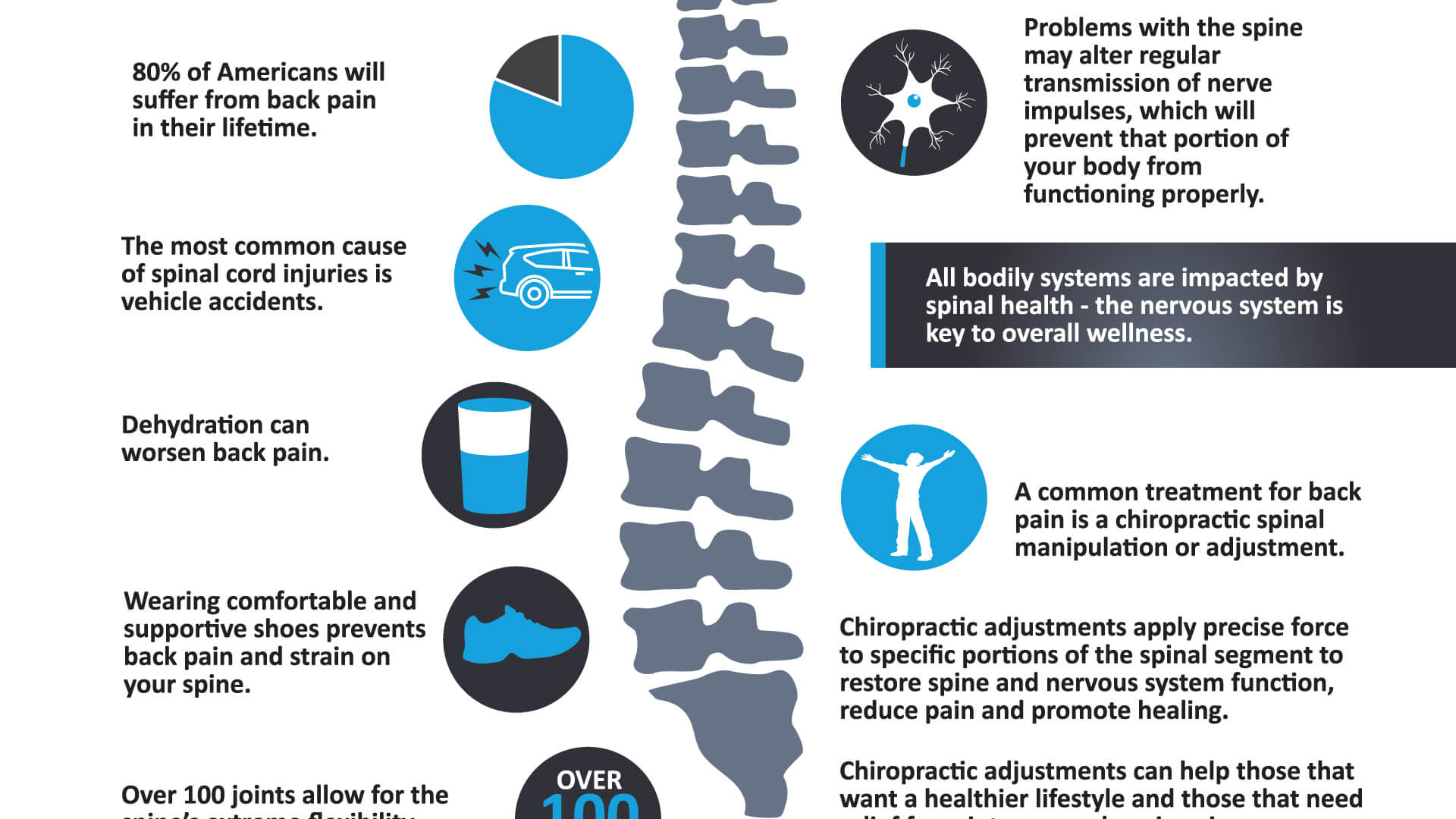The Impact Of Stance On Pain In The Back: Approaches For Maintaining Correct Alignment Throughout Daily Activities
The Impact Of Stance On Pain In The Back: Approaches For Maintaining Correct Alignment Throughout Daily Activities
Blog Article
Uploaded By-Williford Preston
Preserving correct position isn't just about sitting up directly; it's about aligning your body in such a way that supports your spinal column and reduces the threat of neck and back pain. The means you sit, stand, and relocate throughout the day can significantly affect your spine health and wellness. However exactly how precisely can you make certain good placement continually, even during hectic days filled with different tasks? Allow's dig deeper into the refined yet impactful modifications you can make to your everyday routine to keep your back pleased and healthy.
Value of Correct Stance
Correct pose is important in maintaining a healthy and balanced back and stopping discomfort. When you sit or stand with good posture, your back remains in positioning, lowering strain on your muscle mass, ligaments, and joints. This alignment enables the body to disperse weight evenly, protecting against extreme tension on specific areas that can cause pain and discomfort. By keeping your back correctly aligned, you can also enhance your breathing and digestion, as slouching can compress body organs and restrict their performance.
In https://www.verywellhealth.com/steroid-shots-for-sciatica-3975123 , keeping excellent position can enhance your overall look and self-esteem. When you stand tall with your shoulders back and head held high, you exude self-confidence and show up more friendly. Good stance can likewise make you really feel extra energized and sharp, as it advertises correct blood flow and enables your muscular tissues to function successfully.
Incorporating correct stance into your day-to-day routine, whether resting at a workdesk, walking, or exercising, is essential for avoiding pain in the back and promoting general wellness. Bear in mind, a small adjustment in how you hold yourself can make a substantial difference in exactly how you really feel and function throughout the day.
Common Postural Mistakes
When it pertains to maintaining excellent stance, many individuals unwittingly make typical mistakes that can add to back pain and pain. One of the most widespread mistakes is slumping over or hunching over while resting or standing. This setting places extreme stress on the back and can cause muscular tissue discrepancies and discomfort over time.
An additional usual blunder is overarching the lower back, which can flatten the all-natural curve of the spine and trigger discomfort. Additionally, going across legs while resting might really feel comfy, yet it can develop an imbalance in the hips and hips, bring about postural issues.
Making use of a pillow that's also soft or too strong while sleeping can also impact your positioning and add to back pain. Finally, regularly craning https://rowanlgavp.blogsidea.com/37489347/trip-into-the-globe-of-chiropractic-like-discover-the-surprise-keys-to-a-pain-free-life-where-health-waits-for to look at displays or adjusting your position regularly can stress the neck and shoulders. Being mindful of these common postural blunders can aid you keep far better positioning and reduce the danger of neck and back pain.
Tips for Correcting Positioning
To boost your placement and lower back pain, it's essential to concentrate on making small adjustments throughout your day-to-day routine. Begin by being mindful of your posture. When sitting, guarantee your feet are flat on the flooring, your back is straight, and your shoulders are kicked back. Prevent slouching or leaning to one side. Usage ergonomic chairs or cushions to support your reduced back.
When standing, disperse your weight evenly on both feet, maintain your knees a little bent, and tuck in your pelvis. Engage your core muscles to sustain your back. Take breaks to extend and walk if you have a less active job. Incorporate workouts that reinforce your core and back muscular tissues, such as planks or bridges.
While resting, use a cushion that sustains the natural contour of your neck to keep appropriate back alignment. Avoid sleeping on your stomach, as it can stress your neck and back. By being mindful of these suggestions and making small modifications, you can slowly correct your positioning and relieve pain in the back.
Conclusion
Remember, preserving great pose is key to stop back pain and promoting spinal health and wellness. By being mindful of your positioning, distributing weight equally, and involving your core muscles, you can decrease strain on your back and reduce the risk of pain and injury. Integrate ergonomic support, take normal breaks to stretch, and strengthen your core and back muscle mass to keep appropriate placement throughout the day. Your back will thanks for it!
